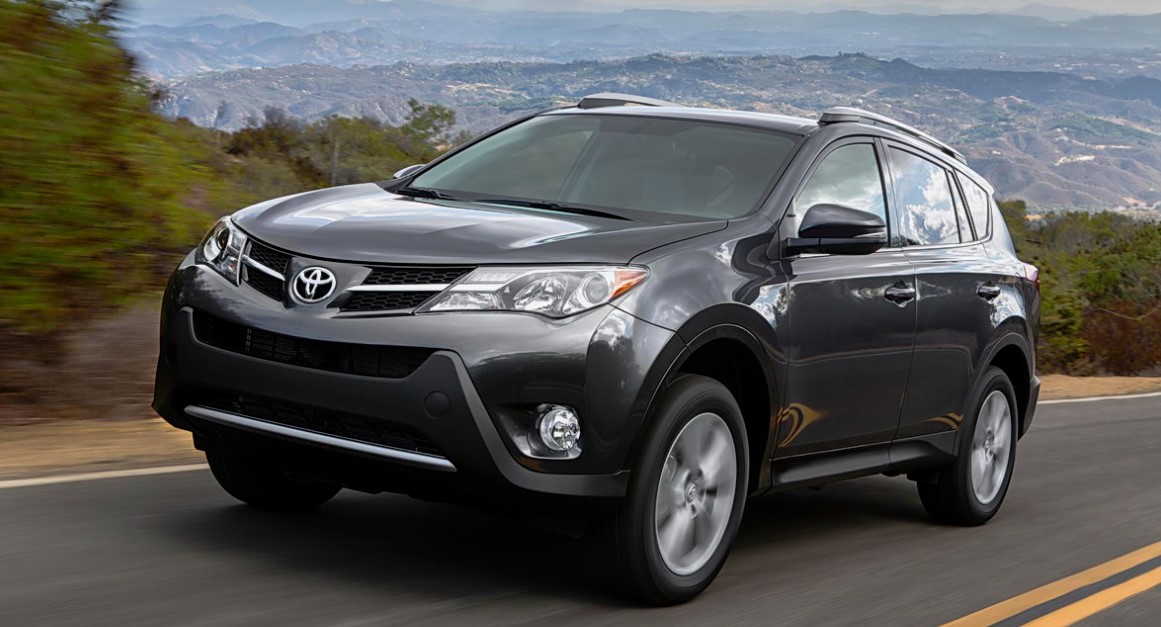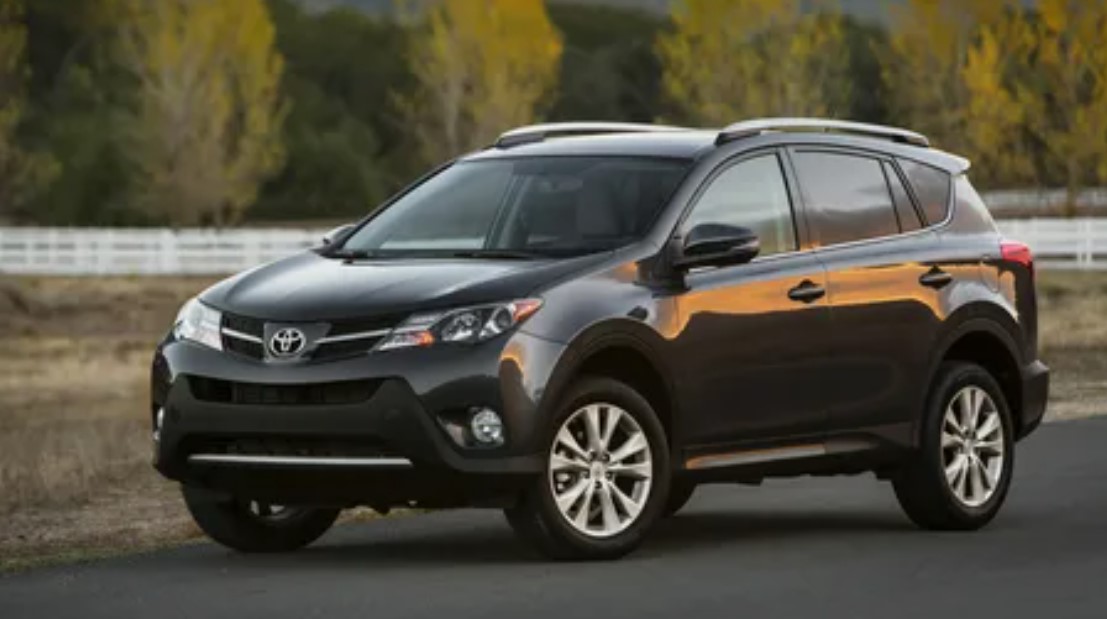Toyota RAV4: A Comprehensive History
Toyota Motor Corporation, often referred to as Toyota, is Japan’s largest automobile manufacturing company. It also provides financial services and engages in various other business sectors. Headquartered in Toyota City, Aichi Prefecture, Japan, the company is renowned for producing and selling passenger cars, trucks, and buses under the Toyota, Lexus, Scion, Daihatsu, and Hino brands. From 2007 to 2009, and again from 2012 onwards, Toyota has been recognized as the world’s largest automaker. The Toyota was also named globally the most valuable automobile brand from 2013 to 2015. For those looking to experience Toyota’s quality and reliability, almizanrentacar.ae offers a wide selection of Toyota vehicles for rent, ensuring comfort and convenience for all your transportation needs.
Introduction of the Toyota RAV4
The Toyota RAV4 debuted in 1994, pioneering the compact SUV segment. The initial RAV4 was a three-door station wagon featuring an all-wheel-drive system, a monocoque body, and independent suspension on all wheels. RAV4 stands for “Recreation Active Vehicle 4 Wheel Drive,” highlighting its design as an active recreation vehicle with all-wheel drive.
First Generation (1994-2000)
The first-generation RAV4 (SXA10) was based on the Toyota Celica GT-Four, initially launched as a three-door model. By 1995, a five-door version was introduced. This generation featured 2.0-liter engines, the 3S-FE and 3S-GE, producing 135 and 178 hp, respectively. It offered both manual and automatic transmissions, with front- or all-wheel drive options. In 1997, a version with a fabric roof was released alongside minor restyling updates.

This first-generation model was revolutionary for its time, combining the utility of an SUV with the comfort and handling of a car. The compact size made it suitable for urban environments while offering the capability for off-road adventures. The RAV4 quickly gained popularity, setting the stage for the future success of compact SUVs.
Second Generation (2000-2006)
The second-generation RAV4 (CA20W) retained both three-door and five-door body styles. It continued to offer front-wheel drive versions, particularly for the US and Japanese markets, and permanent all-wheel drive. Engine options included a 1.8-liter (1ZZ-FE) producing 123 hp, 2.0-liter (1AZ-FE and 1AZ-FSE) producing 150 hp, 2.4-liter (2AZ-FE and 2AZ-FSE) producing 161 hp and a 2.0-liter diesel engine (D-4D) producing 116 hp. This generation faced issues with automatic transmissions in models from 2001 to 2003, prompting a recall and extended warranties. Despite these issues, the Aisin U140/U140F automatic transmission proved reliable.
The second generation featured a more refined and spacious interior, catering to families and long-distance travelers. Introducing new safety features and improved fuel efficiency helped the RAV4 maintain its appeal in a competitive market.
Third Generation (2005-2012)
Launched in November 2005 in Japan and the USA, Canada, and Europe by early 2006, the third-generation RAV4 (CA30W) saw the discontinuation of the three-door model. The all-wheel-drive system was modified to be less permanent, and an extended body version was introduced for the US market. A notable addition was the 3.5-liter V6 engine option. The 2010 update included aesthetic and functional enhancements.
This generation marked a significant evolution in the RAV4’s design and technology. The larger body and improved aerodynamics provided better stability and ride comfort. Introducing the V6 engine option offered more power for those seeking a sportier driving experience.

Fourth Generation (2012-2018)
Debuting at the Los Angeles Motor Show in November 2012, the fourth-generation RAV4 grew in size and featured a new design. Sales began in early 2013. The base engine was a 2.0-liter gasoline unit with 150 hp, paired with either a six-speed manual transmission or a CVT. An upgraded 2.5-liter engine producing 180 hp replaced the 2.4-liter engine. Two turbo-diesel options were available: a 2.0-liter with 124 hp and a 2.2-liter with 150 hp. The spare wheel was moved from the rear door to the trunk.
The fourth generation introduced a more aggressive and modern exterior design, aligning with Toyota’s new design language. Advanced safety features, including lane departure warning and adaptive cruise control, became standard, enhancing the RAV4’s appeal to safety-conscious buyers.
Fifth Generation (2018-Present)
The fifth-generation RAV4 debuted at the New York Auto Show in March 2018, with sales beginning mid-2019. This generation features new 2.0-liter (150 hp) and 2.5-liter (200 hp) Dynamic Force series naturally aspirated gasoline engines, offering improved power, responsiveness, and fuel efficiency. Transmission options include an 8-speed automatic and a CVT. The RAV4 provides two all-wheel-drive systems: Dynamic Torque Control AWD (automatically engaging the rear wheels when necessary) and Dynamic Torque Vectoring AWD (with two separate clutches on each rear wheel).
The fifth generation has received praise for its rugged and stylish design, inspired by Toyota’s off-road trucks. The new platform provides a lower center of gravity, improving handling and stability. Interior upgrades include premium materials, a larger infotainment screen, and enhanced connectivity options.
The RAV4 Today
By the end of 2021, the Toyota RAV4 had become the most popular car globally, with 1,132,000 units sold, surpassing the Toyota Corolla. This achievement underscores the RAV4’s global appeal, combining reliability, performance, and versatility in a compact SUV package.
In Dubai, the RAV4’s capabilities can be tested in desert conditions. Al Mizan Car Rental offers the Toyota RAV4 2024 at a special price of 220 AED daily, allowing customers to experience its cross-country ability and maneuverability firsthand. The RAV4’s robust construction and advanced all-wheel-drive systems make it well-suited for the challenging terrain of the UAE.
Future Prospects
The Toyota RAV4 continues to adapt and innovate as the automotive industry evolves. Future models are expected to incorporate more hybrid and electric options, aligning with Toyota’s commitment to sustainability and reducing carbon emissions. Advanced driver-assistance systems (ADAS) and autonomous driving technologies will enhance safety and convenience.
The RAV4’s enduring popularity and adaptability make it a compact SUV market leader. With its practicality, reliability, and modern features, the Toyota RAV4 remains a top choice for drivers worldwide, meeting the diverse needs of urban commuters, adventurers, and families.
The Toyota RAV4’s journey from its inception to becoming a global favorite underscores its reliability, innovation, and versatility in the ever-evolving automotive landscape.
“Stop chasing the money and start chasing the passion.”
— Tony Hsieh
